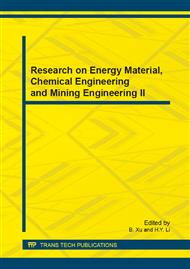p.40
p.44
p.48
p.52
p.56
p.61
p.66
p.70
p.75
Interface Bonding and its Effect on the Mechanical Properties in Roll-Bonded Cu/Al/Cu Hybrid Alloy
Abstract:
Cu-Cr/Al-Fe-Cr/Cu-Cr clad-composite was processed by cold roll-bonding and the effect of interface bonding on the mechanical properties was examined. The clad plates were peeled-off and their separated fracture surface was analyzed. The interface of as-roll-bonded Cu-Cr/Al-Fe-Cr/Cu-Cr hybrid composite was observed to be intact and the interface intermetallics were visible in Cu-Cr/Al-Fe-Cr/Cu-Cr heat-treated at 450°C. The effective area fraction of region with strong mechanical metallic bonding for the as-roll-bonded Cu-Cr/Al-Fe-Cr/Cu-Cr hybrid composite was observed to be lower than that observed in Cu/Al/Cu. The less effective bonding in Cu-Cr/Al-Fe-Cr/Cu-Cr in roll-bonding is thought to be due to the higher strengths of Cu-Cr and Al-Fe-Cr than Cu and Al of commercial purity. The decrease of strength of Cu-Cr/Al-Fe-Cr/Cu-Cr hybrid composite after heat treatment is associated with the softening of Al-Fe-Cr matrix at 450°C, which is far greater than precipitation strengthening of Cu-Cr at 450°C.
Info:
Periodical:
Pages:
56-60
Citation:
Online since:
January 2014
Authors:
Keywords:
Price:
Сopyright:
© 2014 Trans Tech Publications Ltd. All Rights Reserved
Share:
Citation:


